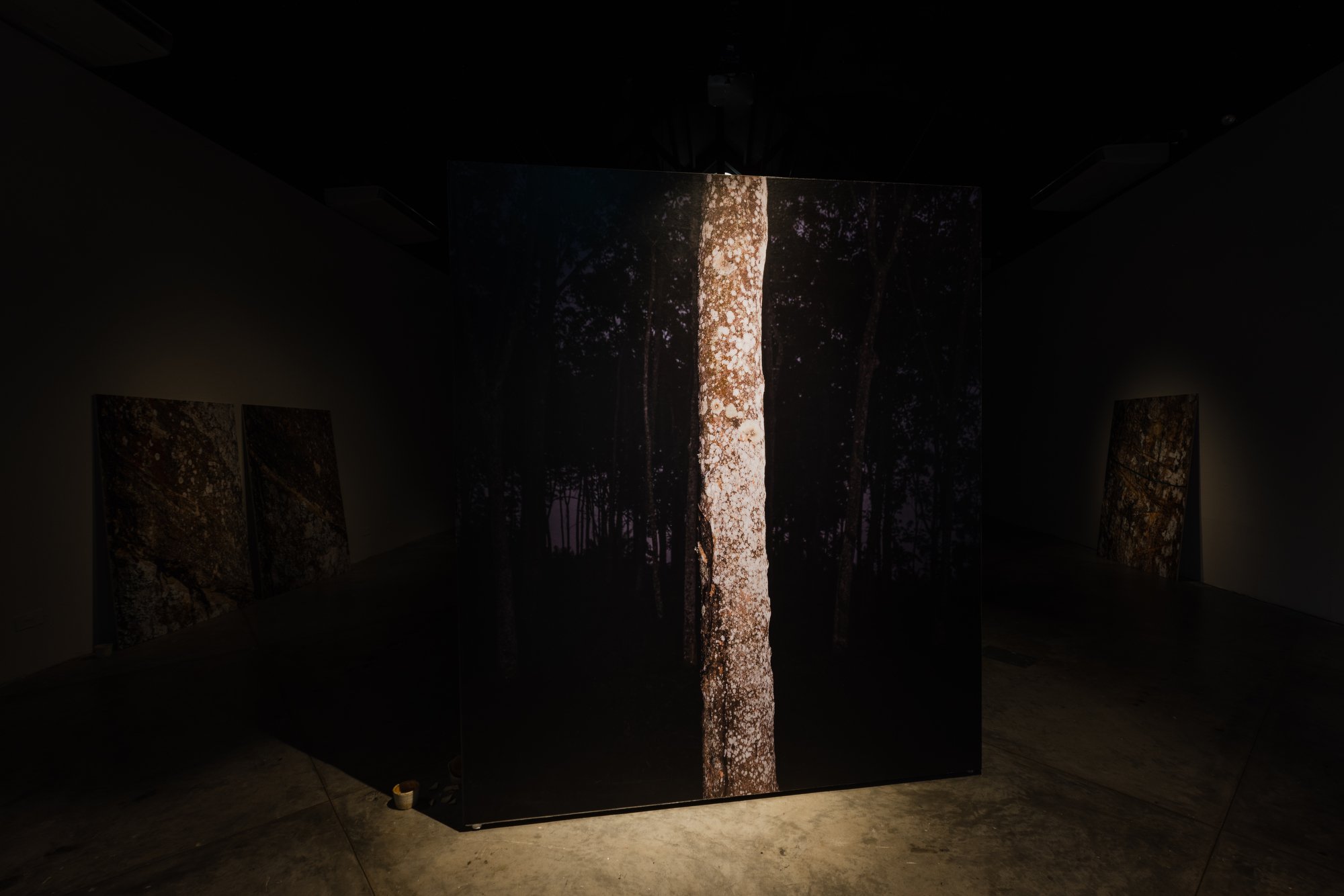
Of Weeping Trees examines the parallel narratives of Hevea brasiliensis, also known as the Para Rubber Tree, and plantation labourers, whose fates became entwined upon their arrival in Singapore in the 1900s. Through colonial postcards, contemporary surveys of former and existing rubber plantations, and the songs sung by these labourers, the exhibition unfolds connections forged over the contested ground of history, economy, and ecology.
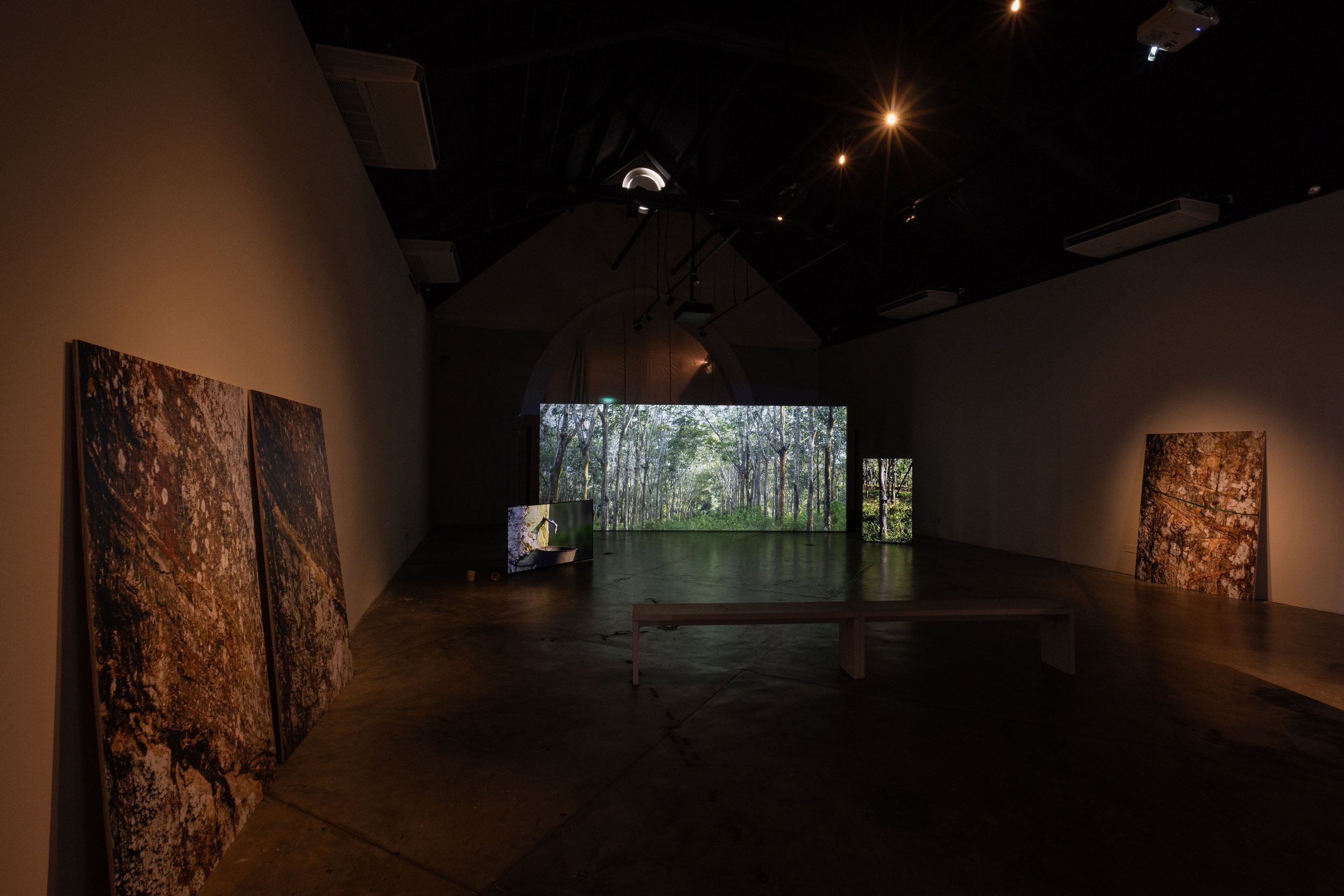
Of Weeping Trees examines the parallel narratives of Hevea brasiliensis, also known as the Para Rubber Tree, and plantation labourers, whose fates became entwined upon their arrival in Singapore in the 1900s.
Through colonial postcards, contemporary surveys of former and existing rubber plantations, and the songs sung by these labourers, the exhibition unfolds connections forged over the contested ground of history, economy, and ecology.
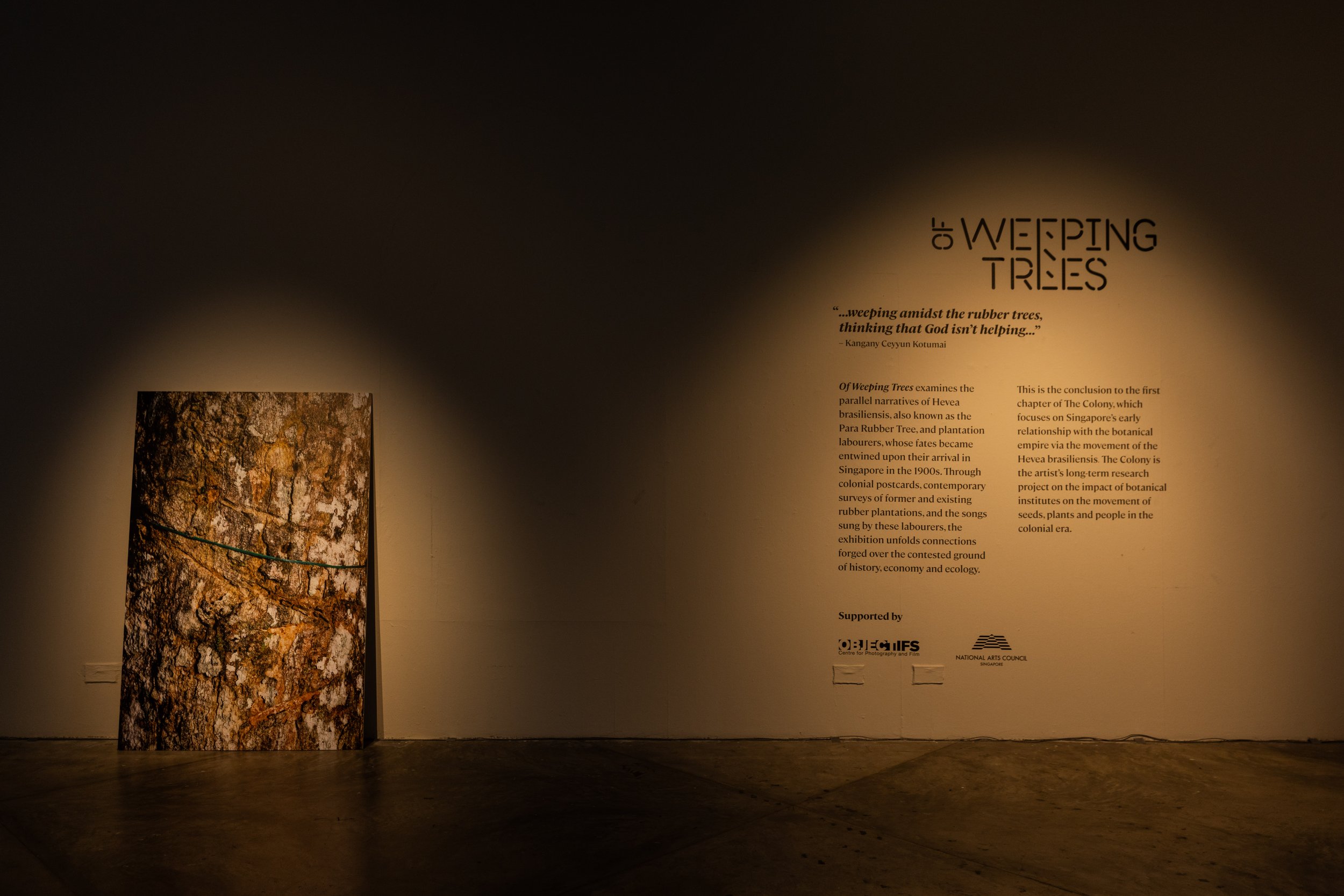
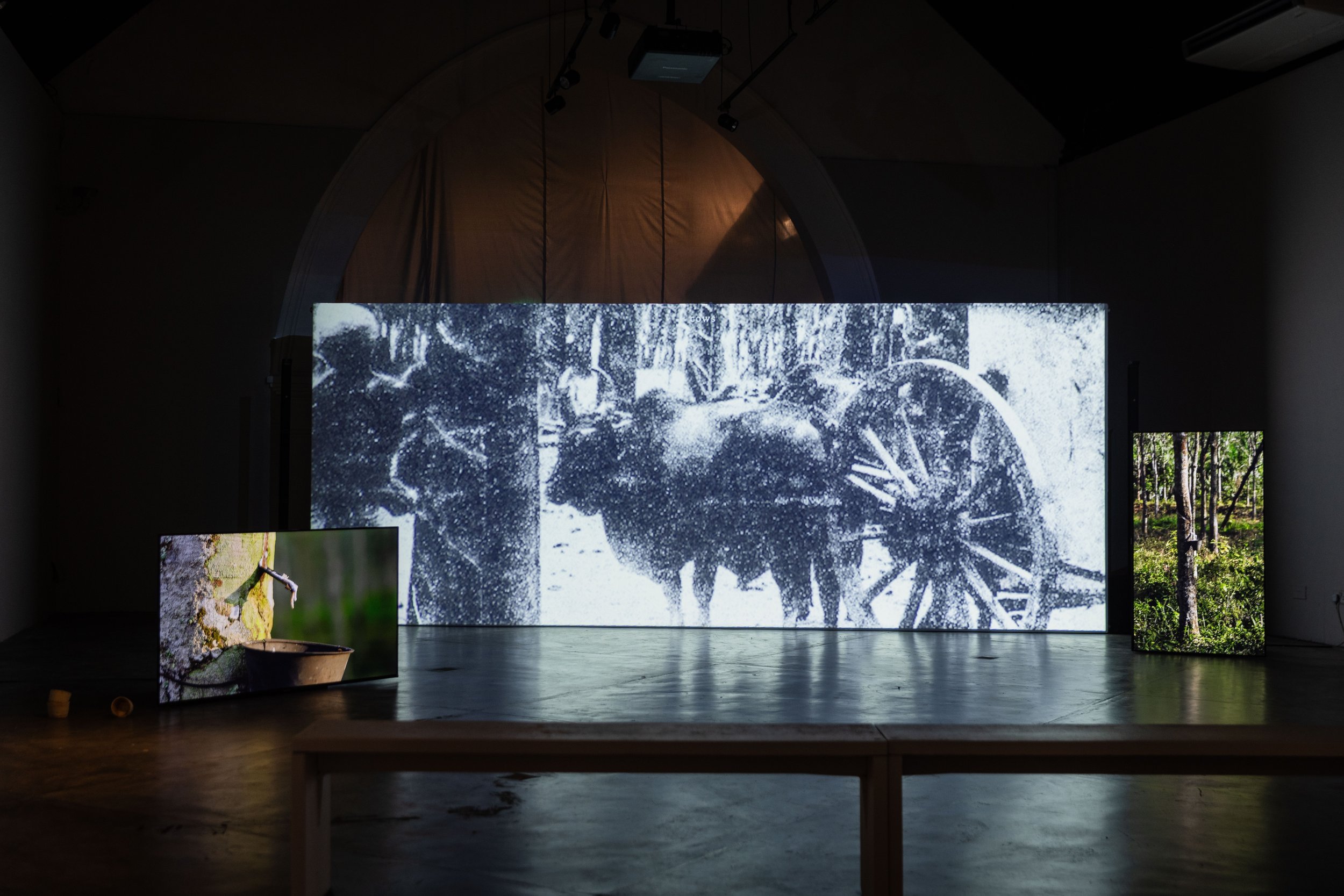
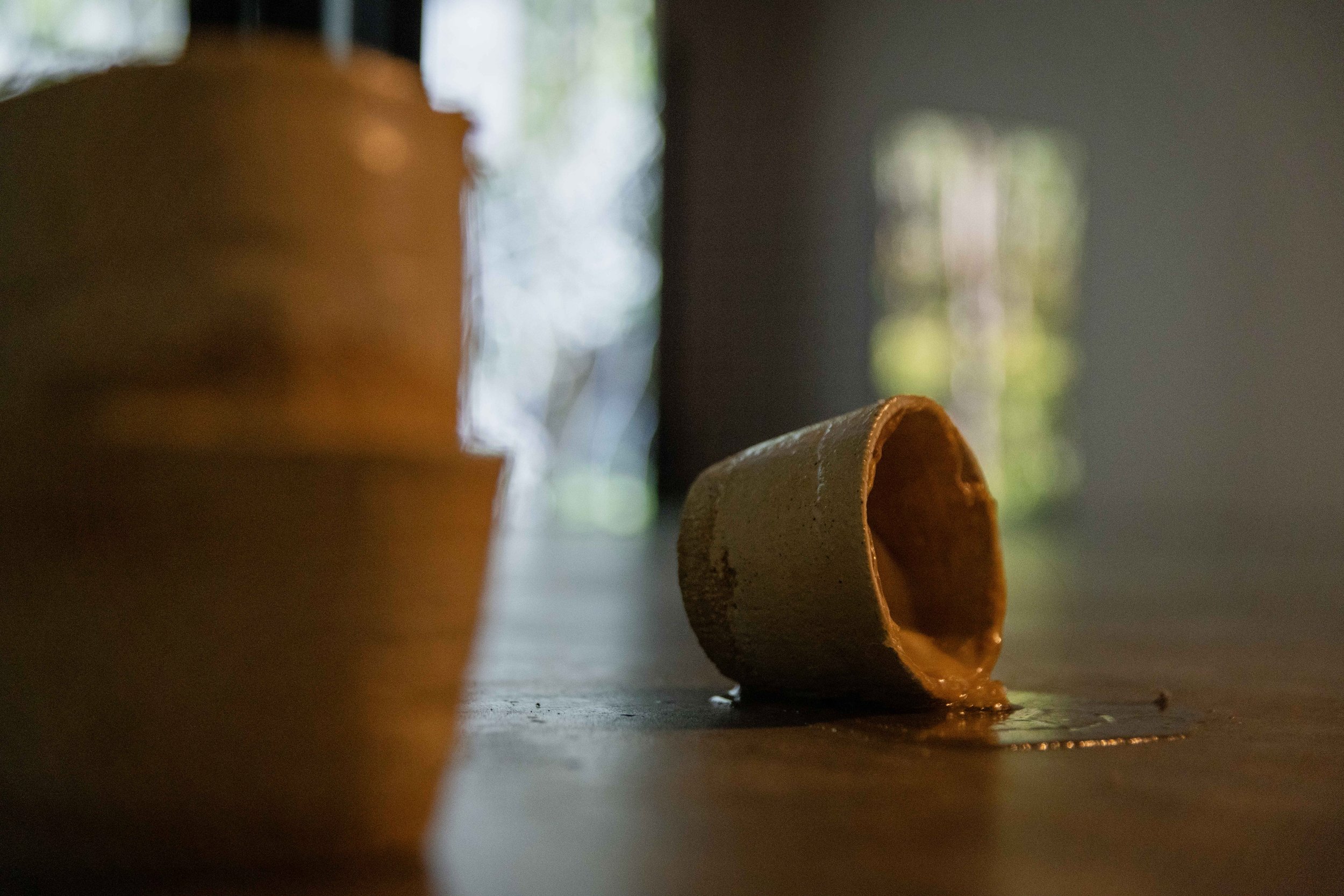
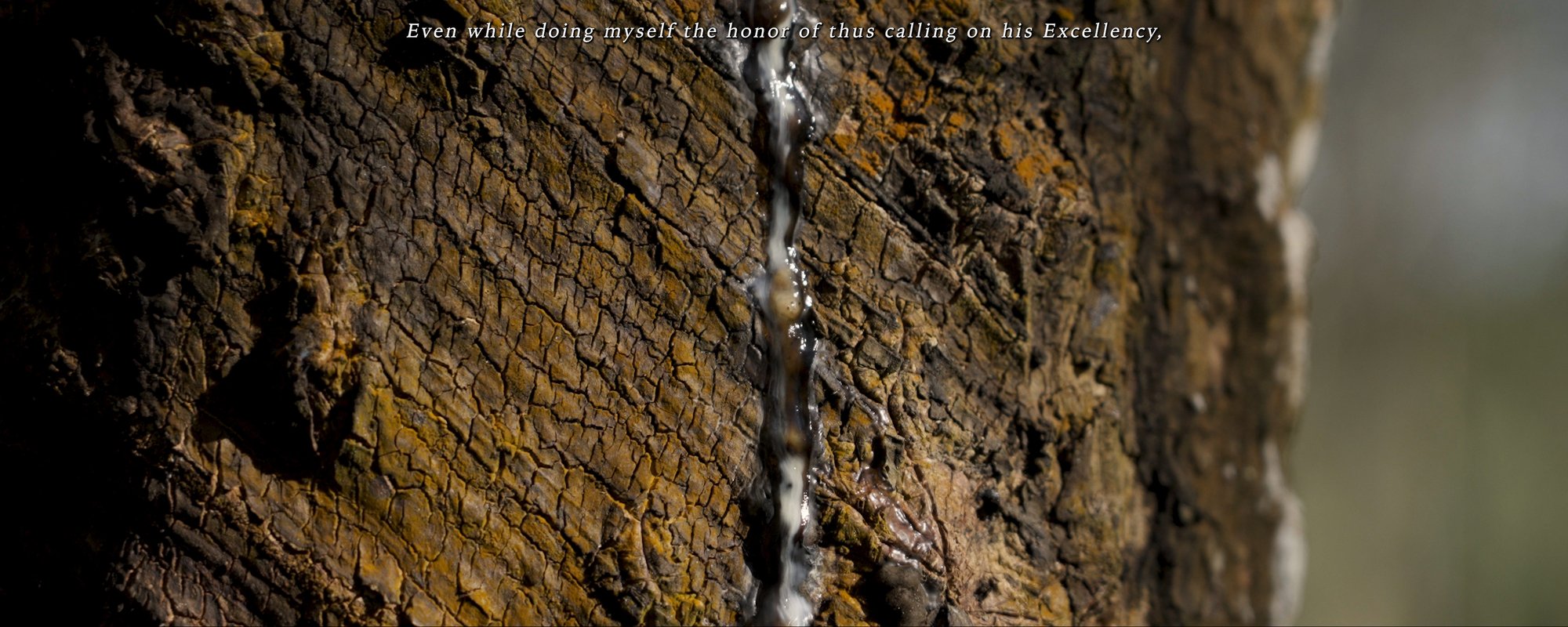
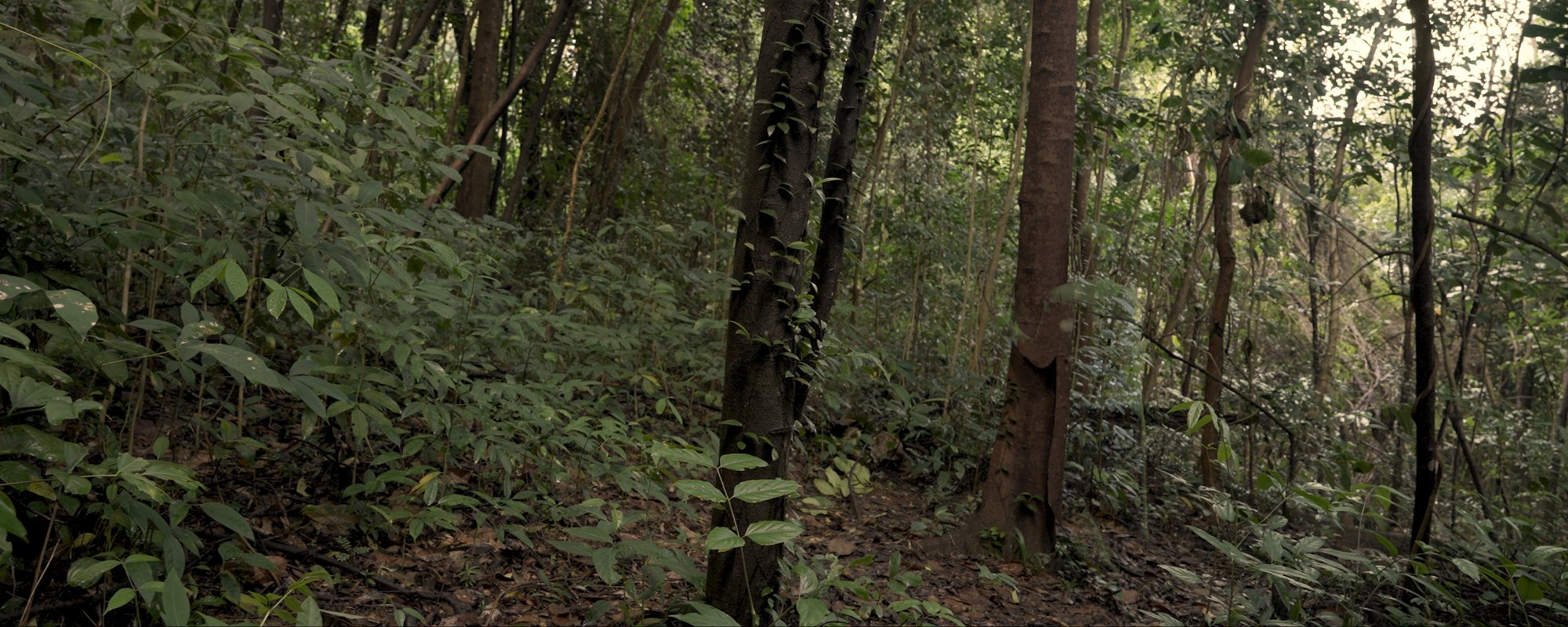
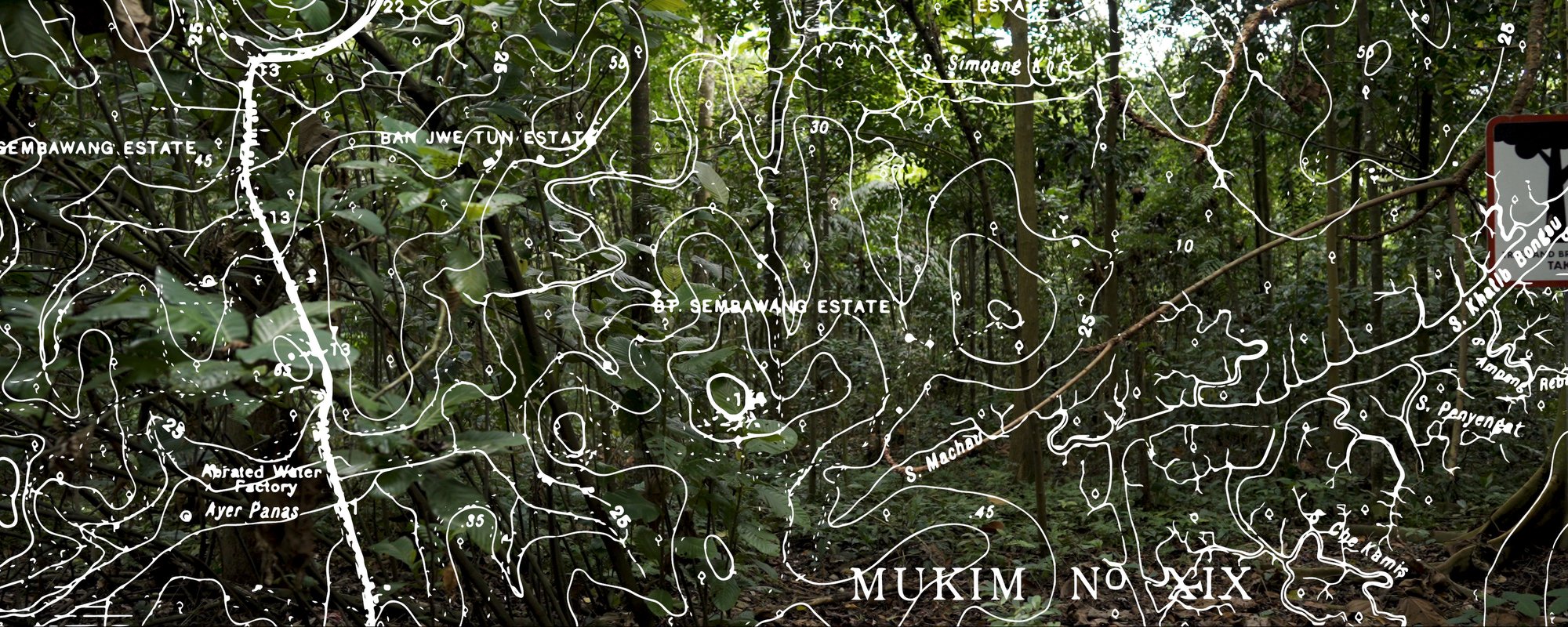










Of Weeping Trees examines the parallel narratives of Hevea brasiliensis, also known as the Para Rubber Tree, and plantation labourers, whose fates became entwined upon their arrival in Singapore in the 1900s. Through colonial postcards, contemporary surveys of former and existing rubber plantations, and the songs sung by these labourers, the exhibition unfolds connections forged over the contested ground of history, economy, and ecology.
Of Weeping Trees examines the parallel narratives of Hevea brasiliensis, also known as the Para Rubber Tree, and plantation labourers, whose fates became entwined upon their arrival in Singapore in the 1900s.
Through colonial postcards, contemporary surveys of former and existing rubber plantations, and the songs sung by these labourers, the exhibition unfolds connections forged over the contested ground of history, economy, and ecology.